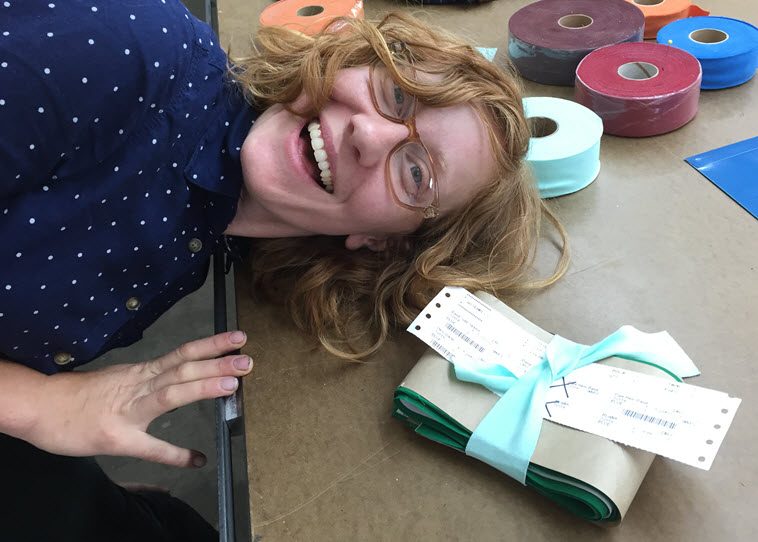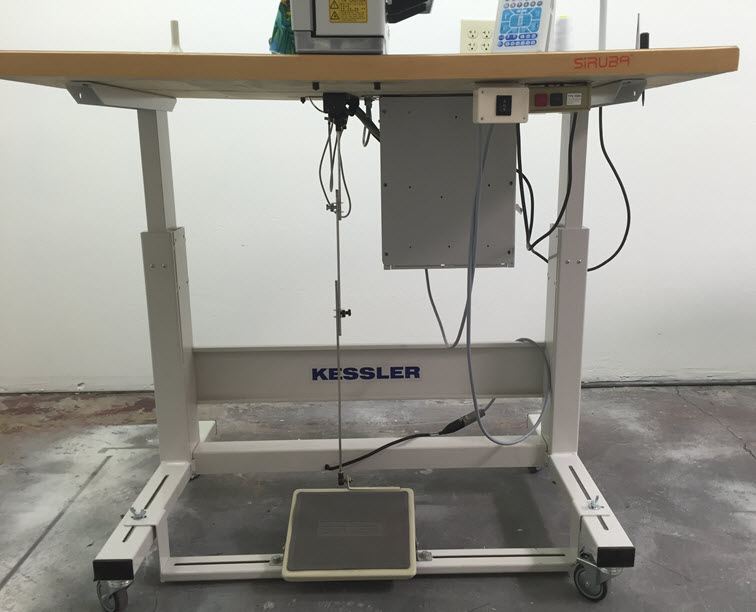My review is only a month behind schedule! This was an outstanding show for us, the best ever. We were able to locate and purchase several items on our list that ranged from significant to trifling (but annoying). For whatever reason, this last show seemed to be a radical departure from previous shows in that vendors were actively thinking of ways they could help us -even if that meant sending us to a competitor.

Our priority item was piece work and bundling software. I should qualify this in several respects. First is that my factory doesn’t really need piece work software as we pay hourly. However, the software is an incredibly useful tool to organize and quantify sewing operations -which is the first step to getting tightly defined costs of the sewing process. My idea in acquiring the software, was to make this process transparent in our apparel manufacturing boot camps but also, to use with my customers who need solid tools to make their operations more efficient. I should probably write a separate entry for this. For now, I’ll say that we bought a program called Incentive Payroll. Cut to the chase, I’ve been very pleased with the responsiveness of the company and the ease of scheduling training (included with purchase). Below is a photo of the dress contrast sub assemblies, for which we used the software. And yes, dot matrix printers are alive and well in manufacturing plants. There is no other way to do print piece work tickets as cost effectively. R.T. Barbee shipped us sample labels to test the process. Thank you Barbee! They are a long standing provider of ticketing used in apparel factories and I am so pleased with the quality and timeliness of service that we received.

Mechanized Table Stands
Another item we were able to procure, after years of wistful longing, were ergonomic, height adjustable table stands from Kessler. We got a motorized KES 2000 and a manual crank, KES 2100. The motorized table stand has been an outstanding choice. Actually, they both are but we put the motorized stand on the Siruba buttonholer and the mechanical one on the Soabar. Motorized stands are the better option but if you don’t have the budget to replace all of your stands with motorized versions, you might get the latter for machines that require the most frequent height adjustments. For example, having the buttonholer on one was very useful because it is a machine that we are most likely to use standing up for a one off. Of course, if we had to do a bunch of them, we’d lower the stand to sitting height. Another unanticipated benefit of the height adjustable stands was repair and servicing of equipment. Mechanics are always having to bustle about and not having to get up from a chair constantly, amounted to a reduction of annoyance.

The manual crank Kessler table stand, was better suited for the Soabar shade marking machine. This is because the machine is used for long stretches of time and one is usually not standing once the shade marking process is under way.The advantage of this table is that is doesn’t require power (also a downside obviously). The motorized version requires a 220v connection in addition to whatever your machine uses.
If you’re new to these parts, adjustable table stands are an integral part of implementing lean manufacturing. Briefly, stitchers go from machine to machine with one item in process rather than having bundles and batches coming to them while they sit at one machine. While counter intuitive, it results in better results and faster construction.
Before I forget and if you’re in the market for such niceties, I strongly prefer the motorized table stand especially if you are considering the implementation of a lean cell (part 2). The reason is that no matter how much you may think otherwise, the stitchers will not (!) raise and lower the table height because the crank takes too long and is quite a bit of work. And yes, you can set up a drill to speed the process up (really, the only way to do it) but again, while a team works single piece flow, raising and lowering tables becomes an impediment and distraction from completing the work. So, if you really want to reap the benefits of flexibility in your sewing set up, get the motorized stand. If you do not get motorized stands, please do not be annoyed with your staff for failing to raise and lower the machines because I Told You So. Again, the manual stand is also good but consider its use and placement; it is better for infrequent height adjustments.
Helpful vendors:
Another helpful vendor was Southwest Sewing Machines out of Houston Texas. Truly, this company went above and beyond to help us resolve a long standing frustration with bobbin winding. I’ve lost the owner’s business card and cannot cite his name but I’m grateful. Judging from reviews of the company, many others are pleased with them as well. So, if you’re looking for machines, parts and service, contact them. They do ship if you’re not local like me. I’m in the market for a few more machines (25 is not enough I guess) so I will be looking for ways to do business with them.
Another vendor who got us out of a bind was Hickory Brands who provided us with the waist band ties for one of the dresses we produced for the spring 2016 manufacturing boot camp. This company specializes in narrow goods, specifically laces, draw cords, braids, and webbing for utility items such as pet leashes. They even produce items such as custom printed lanyards and laces, reflective tape and green recycled products for sustainability programs. In spite of being what most of us would call a large firm, their minimums are very reasonable and small company friendly.
Show themes:
As far as overall show themes are concerned, we saw a lot of robots. Or rather, more sewing robots than we’d ever seen before. Call me Luddite all you will but I don’t see robots replacing stitchers any time soon. Perhaps surprisingly, robot manufacturers agree; the robots are augmenting operations as everyone is short on skilled manpower. The robots are very limited in that they’ll only sew tightly defined shapes like cuffs and shirt collars which is great because new sewing operators do not enjoy sewing thousands upon thousands of those.
Seminars:
We didn’t attend many but one seminar on Re-Shoring was very inspirational. The watch words bandied about were “offshoring”, “re-shoring” and “still shoring”, the latter describing us. The re-shoring seminar was an invigorating panel discussion, necessarily dominated by Under Armour which has made this a cornerstone of their operation. They plan to produce exclusively within the U.S.. The discussion was very affirming for me because this was the first time that I felt like I belonged. For the past 20 years, I’ve endured a lot of criticism and ridicule for my position favoring domestic production. Finally, domestic production is being given greater weight and credibility in the industry.
Closing: hopefully we’ll see you at the TexProcess event in Atlanta, May 22-24, 2018!

Keep going, Kathleen! All’s great!
Hi Kathleen, can you elaborate on how Southwest Sewing Machines helped with your frustration with bobbin winding? Thanks!